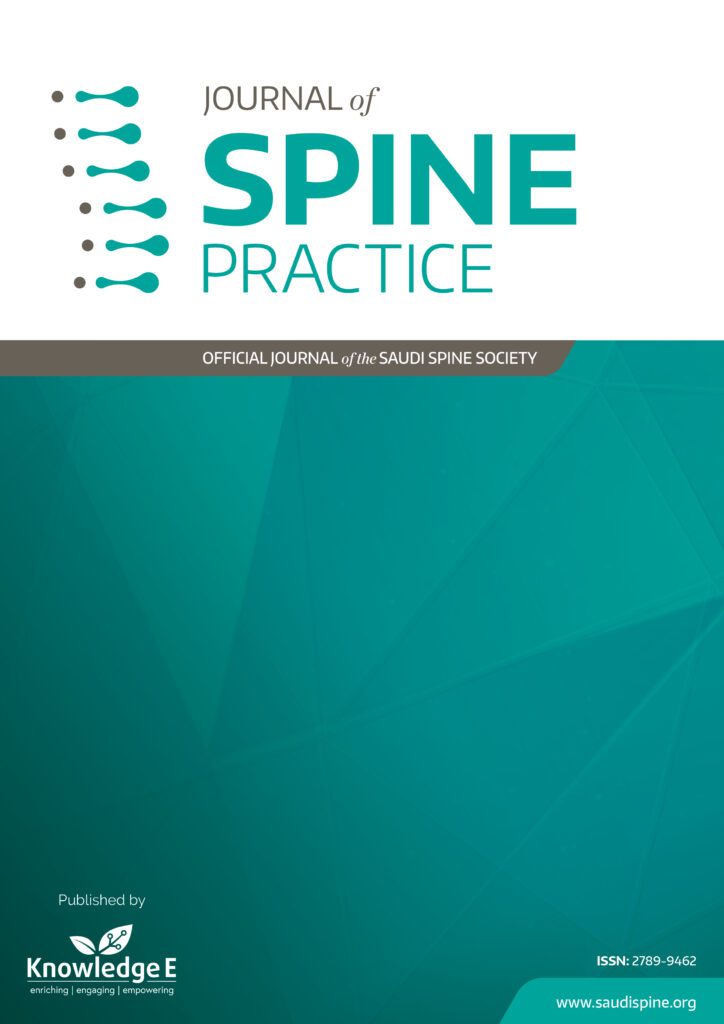
Journal of Spine Practice
ISSN: 2789-9462
Leading research in all spine subspecialties focusing on orthopaedic spine, neurosurgery, radiology, and pain management.
Disc Degeneration in Direct Injury or Instability Models Share Common Metabolic Pathways
Published date: Nov 07 2021
Journal Title: Journal of Spine Practice
Issue title: Journal of Spine Practice (JSP): Volume 1, Issue 1
Pages: 49
Authors:
Abstract:
Introduction: Disc degeneration is the central component involved in numerous common spinal pathologies. Degenerative disc disease affects millions of people every year, yet the mechanisms driving degeneration remain poorly understood. Previous work to date has shown that high levels of intracellular lactate seem to be involved in driving this pathology once thought to be purely mechanical. Here, we present a series of studies utilizing mouse models of mechanical injuring or loading of the intervertebral disc (IVD), with a goal of better defining the role of lactate and lactate transport in degenerative disc disease.
Methodology: Four models of disc degeneration were studied: (i) lumbar disc poke, (ii) tail disc poke, (iii) spinal instability, and (iv) sham. Female mice (C57BL/6J, n = 30) were randomly assigned to one group. In group 1, a retroperitoneal approach exposed the IVD of the lumbar spine, and a 27G needle was used to injure the disc. In group 2, the needle was inserted in the tail IVD. In group 3, lumbar instability was induced by resection of bilateral facet joints and supraspinous/interspinous ligaments. In group 4, a sham was used for each. The mice were euthanized at two, four, and eight weeks. IVD was evaluated by histological and immunofluorescence analysis. RNA extraction from disc tissue was analyzed with QPCR.
Result: Sham mice did not have significant disc degeneration. In groups 1 and 2, the degenerative process at two, four, and eight weeks was characterized by loss of nucleus pulposus (NP) cells and the gradual increase in matrix components in NP. The distinction between NP and annulus fibroids (AF) or endplate cartilage is lost. There was increased expression of collagen X and MMP13 in the NP, and MCT4 was decreased, while MCT3 was increased. In group 3, disorder of the AF was evident in the first two weeks post surgery, the collapsed disc space and the NP area gradually lessened. The proteoglycan detected in the inner layer of AF and the periphery of NP decreased after eight weeks. There was increase in type X collagen and MMP13 in the inner AF and NP.
Conclusion: Our results demonstrate a common molecular pathway whereby discs degenerate after direct injury or becoming unstable. In our model, there was a rapid degeneration of the IVD in mice who exhibit up- and downregulation of several important markers. Importantly, MCT4 was downregulated, while MCT3 was upregulated. While MCT4 was associated with lactate exportation, and its loss resulted in elevated intracellular lactate and disc degradation, MCT3 is rarely expressed and may be acting as a rescue lactate transporter.
References: